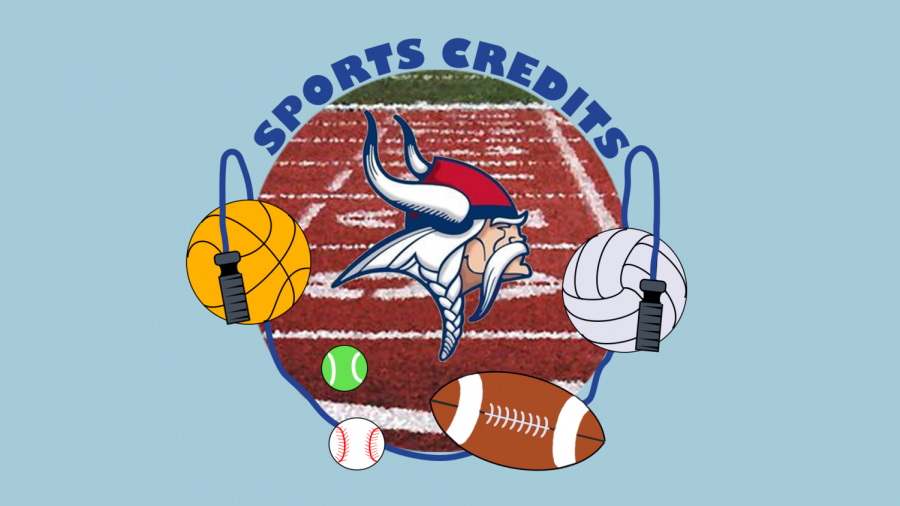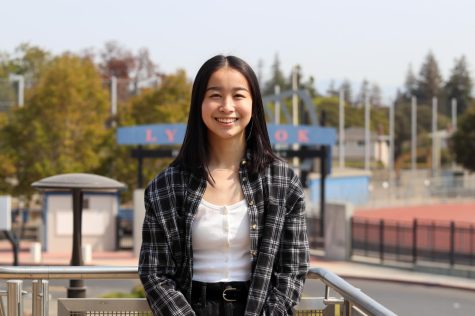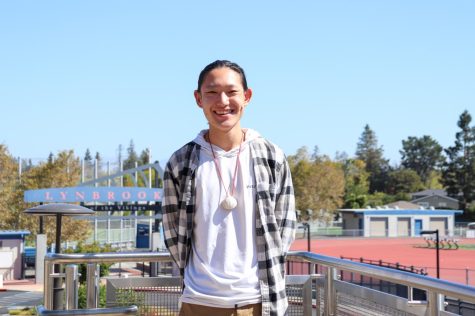A shift in this year’s school sports, PE credits
Graphic illustration by Jason Shan and Crystal Qian
CIF has pushed back the start dates for all fall and winter sports by a few months, but regardless of the uncertain circumstances, Lynbrook’s athletic and PE departments are hard at work devising a feasible plan for students in accordance with the county’s public health guidelines.
August 24, 2020
Many students — especially those who already had their sports seasons cancelled in the spring — are counting on this school year to meet PE credit requirements. Amid the COVID-19 pandemic, with no sports seasons this fall, students participating in Lynbrook sports are now challenged with securing the PE credits that they need to graduate.
The existing PE credit system operates as follows: 20 credits are required for graduation, in which students may earn five credits per sports season and 10 credits per year of PE. Since all students are required to enroll in PE their freshman year, athletes are ultimately left with a 10-credit deficit to fulfill — the equivalent of two sports seasons.
After the initial transition to remote learning, Lynbrook student-athletes resorted to nontraditional practices to make up for their lost playing time. When the California Interscholastic Federation (CIF) cancelled the 2019-2020 spring season, athletes adjusted to a completely new athletics model that consisted of weekly reports of their exercise. Instructed to perform at least 90 minutes of exercise per week outside of regular PE classes, sophomore Sharon Zhu was among 400 spring athletes who felt blindsided by such an unprecedented change.
“It was a good solution considering how rushed and last-minute everything was, but [it] could be improved a lot to have more accountability and variety,” Zhu said. “It was [also] a bit of a hassle to do both the PE workouts and the sports workouts.”
Although some coaches issued recommended team-specific workouts for athletes to complete through athletic training applications such as PLT4M, the 90 minutes of required weekly exercise were a sharp decrease from the hours of rigorous training that the athletes were typically accustomed to. Spring sports were consolidated under the category “PE Athletics” on school transcripts, and student-athletes were awarded five PE credits for their participation.
Due to uncertainty surrounding the pandemic, CIF has decided to delay the 2020-2021 fall and winter sports seasons as well. This decision comes at a time when California has surpassed 650,000 confirmed cases, 16,000 of which are concentrated in Santa Clara County. In June of 2020, Lynbrook notified the community that non-contact sports and on-campus extracurriculars were permitted to host group gatherings of up to 12 students. However, a month later, the school retracted its decision due to changes in the Santa Clara County Public Health guidelines. Along with this announcement, CIF also delayed the reinstitution of all sports until December of 2020 at the earliest.
In response to these decisions, the PE and athletic departments are creating plans to facilitate student participation at home and organizing the return to full athletic participation on campus once it is possible. However, even as Lynbrook officially begins its distance learning model, many questions about the sports and PE system are still unanswered, and few concrete solutions have been implemented.
“There’s a lot of uncertainty,” said Ray Wright, PE teacher and former athletic director. “The administration has been going round and round about [athletics] all summer long.”
The only confirmed plan is to organize two sports seasons, with athletic competitions resuming in late December if possible. All season one sports are tentatively set to resume on Dec. 14, while season two sports will resume on either Feb. 22, March 8 or March 15. Furthermore, no games will be held for the entirety of the first semester, as social distancing guidelines impede the possibility of hosting athletic competitions.
“Obviously, I would love to have our student-athletes out there participating in the sport they love, but safety has to come first,” athletic director Jennifer Griffin said. “I am optimistic that our sports teams will get to start season one on Dec. 14 and season two on Feb. 22, March 8 and March 15.”
Despite all efforts to provide students with the best possible athletic instruction, many athletes still have reservations regarding the effectiveness of the program. Sophomore Patricia Chang, for example, contrasts the traditional practices at school and the unconventional training she performs at home. Chang ran both cross country and track on Lynbrook’s JV teams in the 2019-2020 school year.
“We’re kind of just training on our own [and] keeping in shape as best as we can,” Chang said. “I did the PLT4M workouts because I needed the elective credits. I run six days a week [and] do some core and arms after my runs.”
Chang prefers training at school with her teammates, as she believes it increases her motivation to train and perform to the best of her ability. However, she worries about how her course plans may have to change as a result of the uncertainty surrounding PE credits.
“I already have my credits planned out for all four years,” Chang said. “If they cancel one of the seasons and don’t allow us to do workouts to get [the] credit, [it will] mess up my high school schedule a little bit.”
As an alternative, some students have elected to enroll in PE classes, where plans are much more definitive. PE will operate similarly to last year’s remote instruction, albeit with a few changes to increase student engagement. Given the current restrictions, PE teachers are looking to encompass a wider range of platforms, such as Strava, to enhance students’ overall athletic experience. Although sport-specific classes, such as Racquet Sports and Weight Training, need to be considerably modified due to the lack of special sports equipment at home, PE teachers are making every effort to actively engage students in dynamic exercise.
“I hope we can get back [to normal] as soon as possible,” Wright said. “We’re going to ask who has a jump rope [and] who has dumbbells [to] get as much done as we possibly can, but it’s tough.”
The first PE class meeting every week will cover a synchronous workout session where students perform a workout routine prepared by the teacher. Wednesday’s asynchronous session will include a writing assignment, and the last class of the week will be a cardiovascular session.
Despite unprecedented circumstances, athletes are still working hard in hopes of being able to train together and compete again soon. CIF has pushed back the start dates for all fall and winter sports by a few months, but regardless of the uncertain circumstances, Lynbrook’s athletic and PE departments are hard at work devising a feasible plan for students in accordance with the county’s public health guidelines.





























































